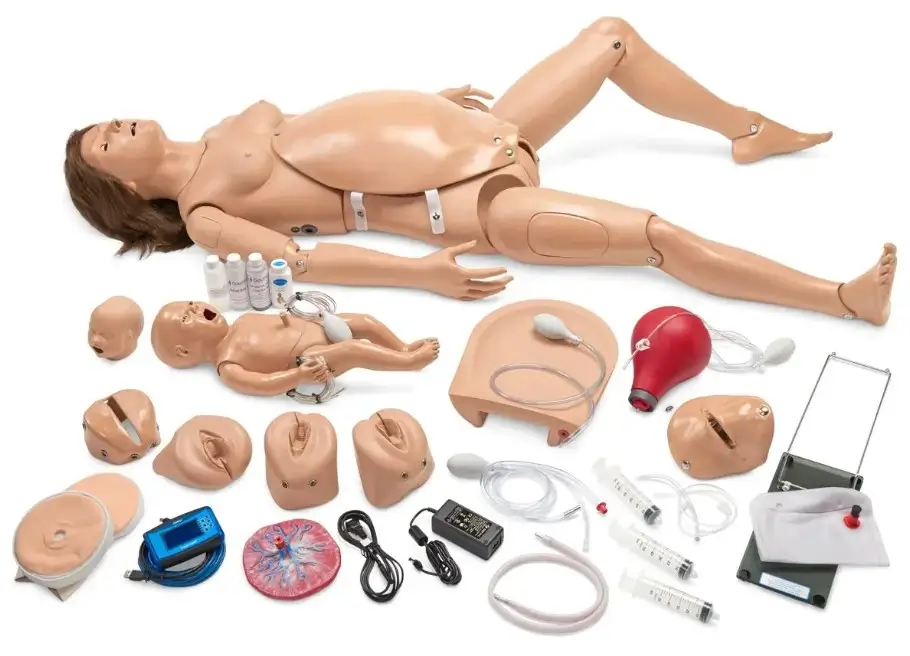
In the medical training era, where the art of delivering life and ensuring the health of both child and mother can’t be overstated, birth child simulators have shown a new era of proficiency and precision. These devices have become a cornerstone of maternal care education. They’re changing the way medical professionals prepare for all the challenges of childbirth. In the article, we’ll talk about these remarkable devices and their outstanding benefits, functionalities and role in shaping the future of the medical field.
Understanding Birth Simulators
Birth simulators are training tools designed to prepare medical students and professionals to practice the required skills and processes related to labor and delivery. They replicate the complicated process of childbirth in a realistic environment. Labor simulators, birthing manikins, and serve are the different names of these simulators. These simulators are an educational platform for mastering techniques such as addressing obstetric emergencies, handling labor pain, and delivering a baby. Practical knowledge is more important than theoretical concepts; these simulators bridge the gap between practice and theory. These innovative devices help professionals and students to develop essential skills and take their medical field to a higher level.
Why are Birth Simulators Better than Traditional Manikins?
Advanced birth simulators are similar to the traditional manikins but offer different capabilities that are specifically tailored for obstetrics training. Dissimilar to traditional manikins, these innovative simulators imitate the challenges and physiological responses related to childbirth and labor. These simulators perfectly emulate all the labor stages, including variations in fetal presentation and potential complications that may arise throughout delivery. These devices have the capability to recreate the dynamic nature of childbirth. Trainees can practice operations such as delivering a baby’s head and addressing postpartum hemorrhage, along with getting quick feedback on their actions.
This level of practicality improves the educational experience and allows students and professionals to build confidence and refine their skills in handling challenges associated with obstetric scenarios.
Working of Birth Simulators
Simulators work via a combination of modern technology and anatomically accurate models. Learners can practice several birthing maneuvers due to the features like interchangeable components and lifelike pelvic models offered by these simulators. The sensors and feedback systems embedded inside the devices can obtain real-time data on delivery progress, maternal vital signs, and fetal heart rate. This synergism of technology integration and physical fidelity allows trainees to interact with simulators as they interact with actual patients. Learners can immerse themselves into a realistic environment, whether they practice baby delivery or respond to emergent situations.
What are the Benefits of Birth Simulators?
Birth simulation devices provide various benefits extending across numerous medical education dimensions. Let’s discuss those advantages below:
Skill Development: Birth simulation devices are an excellent benefit for those who are new in the medical field. These devices transform their way of practicing the delivery process and enhance their skills to tackle any challenges and complications throughout the childbirth delivery process.
Risk-free Space: The simulators serve a risk-free space from monitoring labor progression to achieving accurate fetal positioning
Improved Decision-Making Abilities: There should be quick and well-informed decision making when handling the complexity of obstetrics. Birth simulators create scenarios that enable medical professionals to sharpen their decision-making abilities and clinical judgment. By encountering a wide range of scenarios, trainees can analyze, assess, and make informed decisions accordingly.
Increased Confidence: Simulators play a key role in boosting a learner’s confidence level and allowing them to manage obstetric processes and challenges in a realistic environment.
Improved Real Outcomes: Continuously practicing with birth simulators enables professionals or learners to get positive results in every operation associated with birth deliveries. These simulators help professionals improve their skills and techniques and ensure the well-being of the baby and mother.
Obstetric Emergencies: Childbirth simulators provide an environment to practice a broad spectrum of obstetric emergencies.
The Impact of Birth Simulators in Future
As birth simulators continue to evolve in medical training in the future, their technological upgrades will make a positive impact. Continuing practice with simulators will improve the obstetrician’s clinical competence. The simulators inspire innovative care delivery and encourage the development of protocols and techniques that improve patient safety. Moreover, the simulators foster collaboration among nurses, learners, and other professionals involved in the delivery process.
Which Companies Specialize in Providing Birth Simulator Devices?
There is a wide range of companies that feature reputed brands offering a variety of advanced childbirth simulators. If you’re in the medical field and looking for these devices to improve the skills of learners and professionals, explore the online websites of some trusted brands. Explore their devices, including details, to get the best device according to your needs and preferences.
Final Words!
Birth simulators are vital in medical training. They allow new learners to tackle challenges and experience different situations during operations. Moreover, these devices prepare professionals and learners to deal with complications during delivery and labor, ensuring the safety of patients.